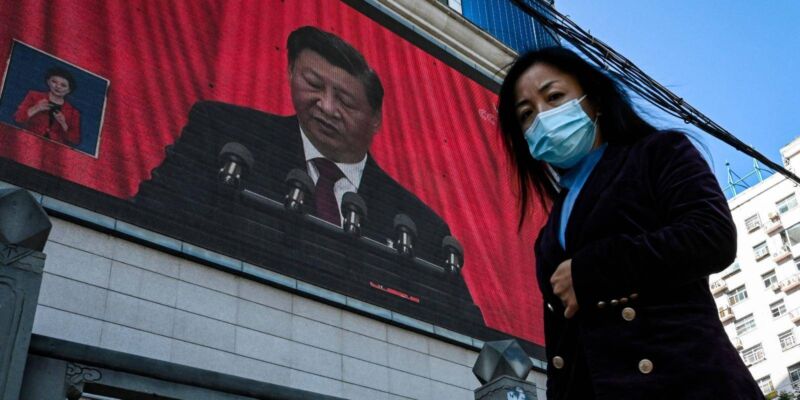
The 20th Party Congress report is significantly shorter than the 19th, which is a clear indication of Xi’s success in centralizing power. The report acts as a summary of the party’s achievements and its plans – expressed as the lowest common denominator of consensus between competing factions. A shorter political report would seem to represent fewer factions now seeking consensus.
In the 20th Party Congress report, the language on Taiwan has been revised, reflecting the changes in tone and the policies of the CCP senior leadership. In addition to the conventional ‘peaceful reunification’ term, there is also an addition of more hawkish language on Taiwan to ‘not exclude the use of force as a last resort’.
Xi also suggested that ‘resolving Taiwan Question should be in hands of the Chinese’, sending a further warning to the US and other Western allies which are perceived as interfering in Taiwan affairs.
In his remarks, Xi suggested the ‘zero-COVID’ strategy has worked for China although he gave no clear timeline on when the policy will end. He also proposed building a healthcare system able to cope with future pandemics. This implies that China is still in short supply of sufficient healthcare resources to cope with a disease like COVID.
Economic policy reveals anxiety
On economic policy, much of the emphasis is given to the extent to which security and economic growth should go hand in hand, which illustrates Beijing’s deep anxieties on supply chains and the high-tech sector. These supply chains need to become more ‘self-determined, self-controlled’, voicing frustration that the highest value-added elements of the Chinese tech sector remain reliant on overseas suppliers and vulnerable to geopolitical tensions.
Also, he expected the Common Prosperity Initiative will further adjust uneven income distribution to increase the amount of middle-income population. He gave little favours for financial services and fin-tech companies but insisted that China should remain as a manufacturing-led economy with qualitative growth. That implies Beijing will tolerate much slower growth so long as the income gap between the rich and poor is closing.
On foreign affairs, Xi has completely abandoned the ‘new types of great power relations’ – instead he has stressed that China should further develop its ties with the Global South through the Global Development Initiative and the Global Security Initiative.
This is indicative of Beijing’s realization that its fraught relationship with the West is here to stay, without any prospect of improvement soon. Interestingly, the Belt and Road Initiative (BRI) is not mentioned in the report’s section on foreign affairs but is referred in the section on China’s regional developments. This potentially signals Beijing will be using BRI as a trade and investment promotion tools in China’s near neighbourhood and is less likely to put its new investments afar.
Finally, his goal is to make China jump into the club of middle to high income countries by 2035 and avoid the so-called middle-income trap but, in the current climate, this is easier said than done.
This is indicative of Beijing’s realization that its fraught relationship with the West is here to stay, without any prospect of improvement soon. Interestingly, the Belt and Road Initiative (BRI) is not mentioned in the report’s section on foreign affairs but is referred in the section on China’s regional developments. This potentially signals Beijing will be using BRI as a trade and investment promotion tools in China’s near neighbourhood and is less likely to put its new investments afar.
Finally, his goal is to make China jump into the club of middle to high income countries by 2035 and avoid the so-called middle-income trap but, in the current climate, this is easier said than done.
Dr Yu Jie, Senior Research Fellow on China, Asia-Pacific Programme.
